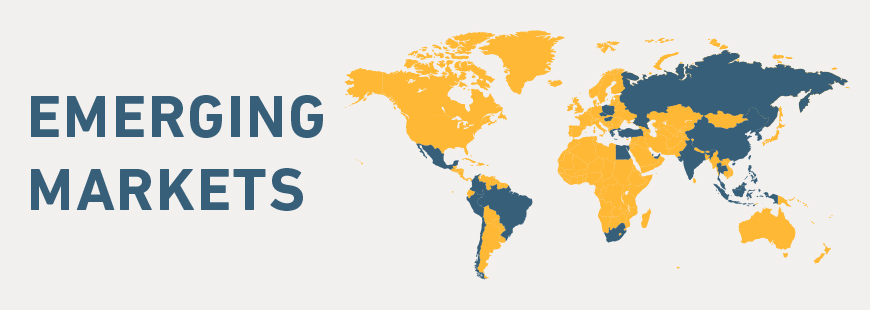
In the early 1980s, economists coined the term “emerging markets” to describe investment in developing nations. Despite its widespread use, no single definition has been established.
However, the majority of experts agree that nations or regions undergoing rapid economic expansion are identified as “emerging market investments.” Factors such as a nation’s GDP and per capita income are considered in the formula used to identify emerging markets. Brazil, Russia, India, and China, among others, have experienced remarkable economic growth in the last ten years.
There are many consumers and a robust economy in certain rising markets, including South Korea. Others, like parts of Africa, the Middle East, and Southeast Asia, are still in the beginning stages of building stable environments and robust economies.
Benefits of investing into Emerging Markets
Significant Growth Potential: Emerging economies frequently exhibit quick rates of economic expansion, which might present chances for profitable investments. These economies might be expanding more quickly than those in more mature countries, which could result in larger possible profits for investors.
Rich Natural Resources: Natural resources like natural gas, petroleum, minerals, and agricultural items are abundant in many rising markets. Investing in businesses that serve these markets can give exposure to these products and possibly large returns as the demand for these assets rises globally.
Expanding Customer Base: Emerging markets frequently have sizable populations with rising levels of income and spending capacity. These populations may buy more products and services as they become wealthy, which presents a market opportunity for companies that serve these customers.
Diversification: As emerging markets might not be as strongly associated with developed markets, investing in them might help a portfolio become more diversified. This may lessen the overall risk of the portfolio.
Undervalued Assets: Certain developing economies may offer investing opportunities in undervalued assets like bonds, stocks, and real estate. Investors might find these assets available for less than their inherent value, potentially leading to profits as their value increases.
Risks in Emerging Markets
Investing abroad with the capability to create value benefits both shareholders and the host nation, but there’s no guarantee of success.
In both emerging and developed economies, political events, economic downturns, and shifting public opinion can derail the best-laid plans.
The way these dynamics interact and how that affects the political decisions made by multinational corporations will be particularly noticeable as national governments navigate an unpredictable path toward stabilization in the wake of the global financial crisis.
Techniques for Reducing Risk in Emerging Markets
Investing in developing nations carries higher risks compared to advanced markets, but investors can mitigate these risks effectively.
Diversification: Investing across a range of asset classes, industries, and geographical areas is one of the best strategies to reduce risk. This can lessen the impact of any one investment on the portfolio as a whole and help to spread risk.
Investing in Mutual Funds & Exchange-Traded Funds: Investors may want to look into mutual funds and exchange-traded funds (ETFs) with a focus on emerging markets. By exposing investors to a wide variety of emerging market assets, these funds may help control risk.
Researching a Company & Emerging Market: Investors should investigate the firms they are thinking about investing in and the emerging market in great detail. Analyzing governmental and economic patterns, laws and regulations, and corporate governance procedures are a few examples of this.
Keeping an Eye on Currency Risk: Investors need to keep an eye on currency risk and understand how changes in exchange rates may affect their holdings. This can involve buying investments priced in local currencies or hedging currency risk.
